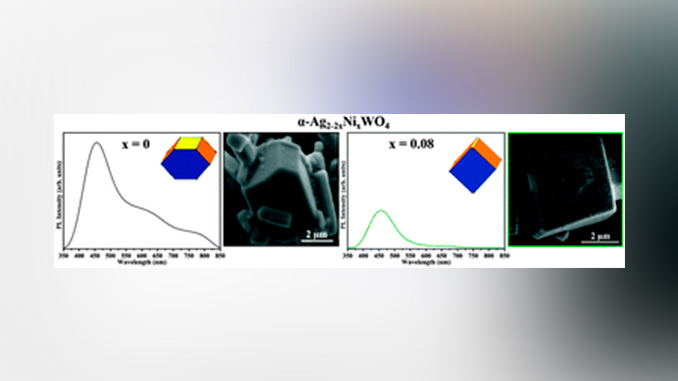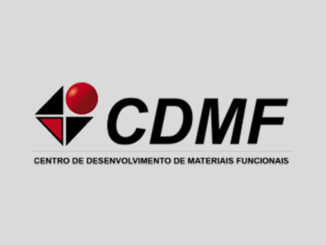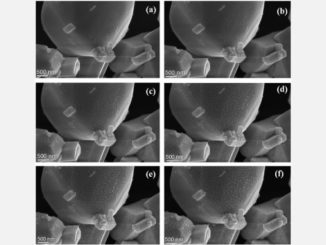
Writers:
Keywords: morphology; structure; optical properties
Abstract: In this work, we investigated the effects of chemical substitution on the structural, electronic, and optical properties of α-Ag2−2xNixWO4 (0 ≤ x ≤ 0.08) solid solutions prepared by a facile microwave-assisted hydrothermal method. The results showed that the increase of Ni concentration in α-Ag2WO4 microcrystals as a host matrix caused a morphological transformation and a shift of the electronic and optical properties. Based on first principles calculations and using Wulff’s construction, particle shapes and their transformations in α-Ag2WO4 and α-Ag2−2xNixWO4 can be affected by controlling the ratios of surface energy values between the different facets. In addition, theoretical calculations revealed that Ni substitution in α-Ag2WO4 is more favorable in the Ag2 and Ag4 positions, in which the local coordination of Ag atoms corresponds to clusters with coordination numbers of seven and four, respectively. This behavior could be related to the degree of medium-range structural disorder in α-Ag2−2xNixWO4crystals. The experimental results were correlated with theoretical simulations to achieve a deeper understanding of the relationship between morphology and properties. These results provide the basis for a rational design for the compositional modulation of structural and optical properties.




